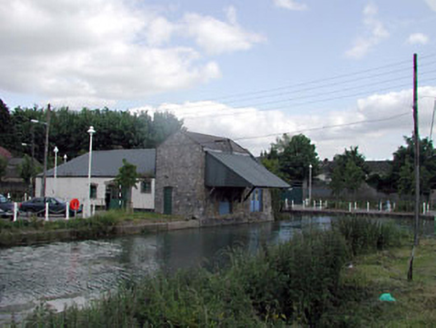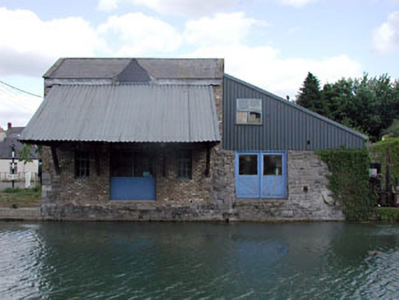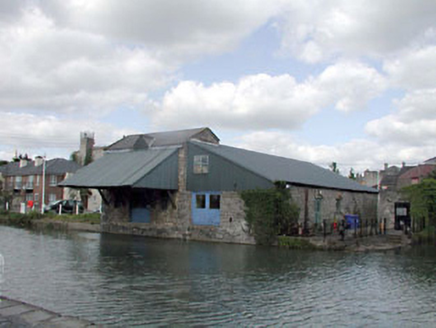Survey Data
Reg No
11814005
Rating
Regional
Categories of Special Interest
Architectural, Historical, Social
Original Use
Store/warehouse
In Use As
Engine shed
Date
1770 - 1790
Coordinates
289111, 219315
Date Recorded
22/05/2002
Date Updated
--/--/--
Description
Detached three-bay two-storey former canal warehouse, c.1780, with lean-to canopy over door opening to west. Extended, c.1800, comprising three-bay single-storey return to rear to east and single-bay single-storey rubble stone lean-to end bay to right (south) having three-bay single-storey return to rear to east. Extensively renovated, c.1990, to accommodate use as training centre. Gable-ended roof with slate. Clay ridge tiles. Rendered coping to gables. Replacement aluminium rainwater goods, c.1990. Lean-to roof to canopy. Replacement corrugated-aluminium, c.1990, on timber brackets with gablet over. Gable-ended and mono-pitch roofs to additional ranges. Replacement corrugated-aluminium, c.1990. Aluminium ridge tiles, coping and rainwater goods. Yellow brick Running bond walls to front (west) elevation. Cut-stone quoins. Rubble stone walls to side (north) elevation. Rendered walls to return. Painted. Random rubble stone walls to end bay to south and to return to east. Square-headed window openings. Stone sills. Brick dressings. Replacement timber casement windows, c.1990. Square-headed door openings (some in segmental relieving arches). Brick dressings. Replacement glazed timber panelled double doors, c.1990. Sited fronting onto canal harbour.
Appraisal
This former canal warehouse is an attractive feature fronting on to the canal harbour – originally a small-scale building, much extended in the early nineteenth century, the varied plan and roofline is a picturesque addition to the surroundings. Although extensively renovated in the late twentieth century to accommodate an alternative use, the amendments entailed in that process have not detracted considerably from the original integrity of the structure although, with the exception of the wall masses, few original features and fittings survive intact. The construction of the walls in rubble stone, with some sections fashioned in yellow brick, is a fine example of polychromy. The building is of social and historic interest for its originally intended use, having stemmed from the introduction of the canal to the locality and having been a product of the commercialisation and industrialisation of Naas.





